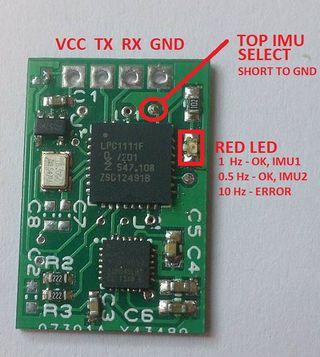Pins and Connectors: Difference between revisions
No edit summary |
|||
| Line 7: | Line 7: | ||
{{COMMENT|The Rx and Tx pins on the StorM32 board must be connected to the Tx and Rx pins on the NT modules.}} | {{COMMENT|The Rx and Tx pins on the StorM32 board must be connected to the Tx and Rx pins on the NT modules.}} | ||
{{COMMENT|If starting from a "classic" (non-NT) STorM32 gimbal kit with an I2C IMU module, it is usually necessary to rewire existing cables to match the | {{COMMENT|If starting from a "classic" (non-NT) STorM32 gimbal kit with an I2C IMU module, it is usually necessary to rewire existing cables to match the pinout of the NT bus.}} | ||
:[[File:NT_Pinout.jpg|480px]] | :[[File:NT_Pinout.jpg|480px]] | ||
Revision as of 11:05, 28 April 2016
STorM32 v1.x Boards
On the STorM32 v1.x main boards, the I2C plug is used as NT bus connector, with the pin assignments as shown below.
Comment: The Rx and Tx pins on the StorM32 board must be connected to the Tx and Rx pins on the NT modules.
Comment: If starting from a "classic" (non-NT) STorM32 gimbal kit with an I2C IMU module, it is usually necessary to rewire existing cables to match the pinout of the NT bus.
NT v1.x Modules
All NT v1.x modules have a 4 pin JST plug for the NT bus connector, with the pin assignments as shown below. They in addition offer a BOOT0 solder jumper, to allow for a first-time flashing. Some modules offer some further solder jumper for configuring them, some others expose also the SWD pins, and yet some others may provide access to additional extension pins.
CC3D Atom
On the CC3D Atom boards the Main Port plug is used as NT bus connector, with the pin assignments as shown below.




